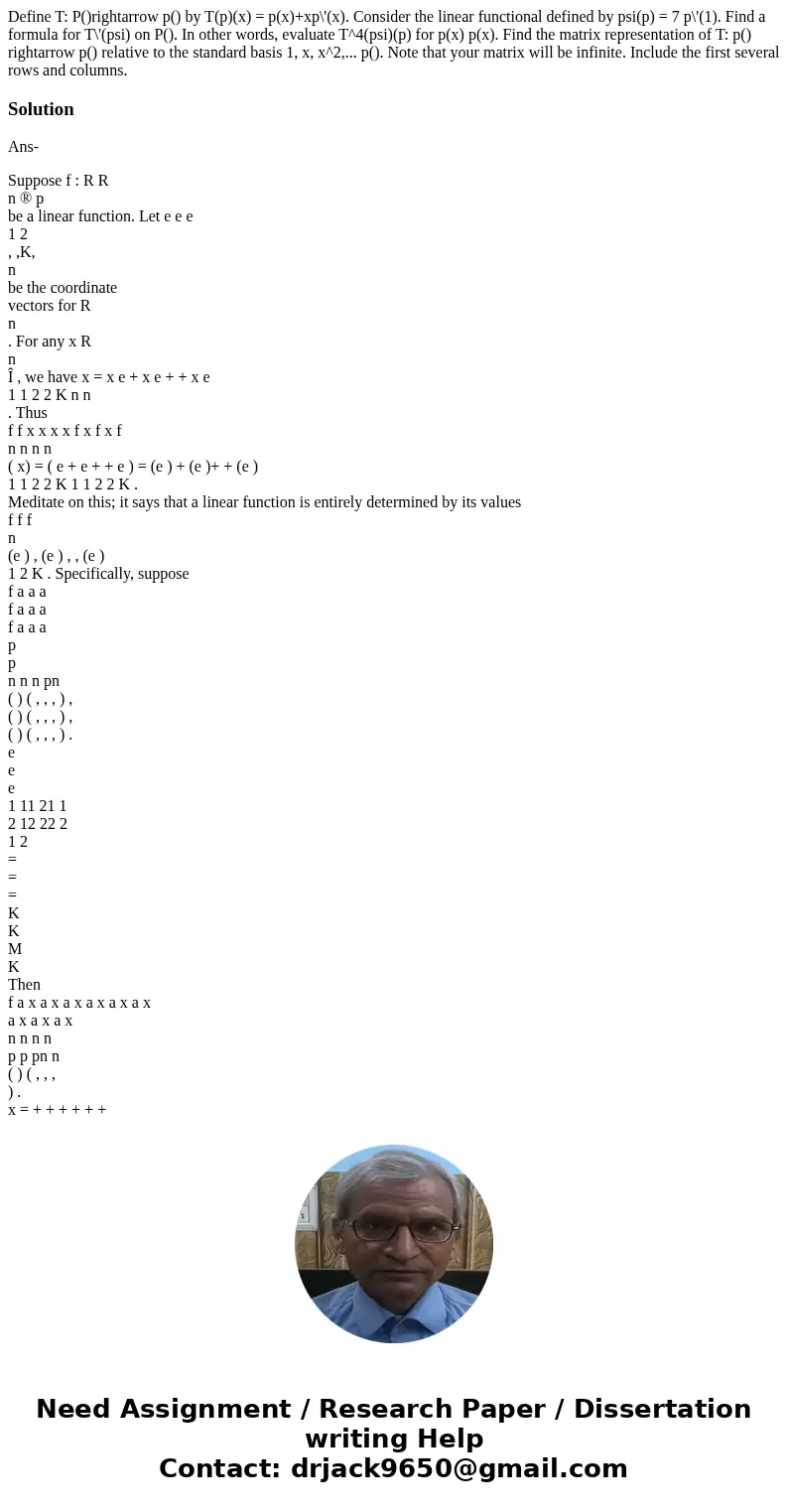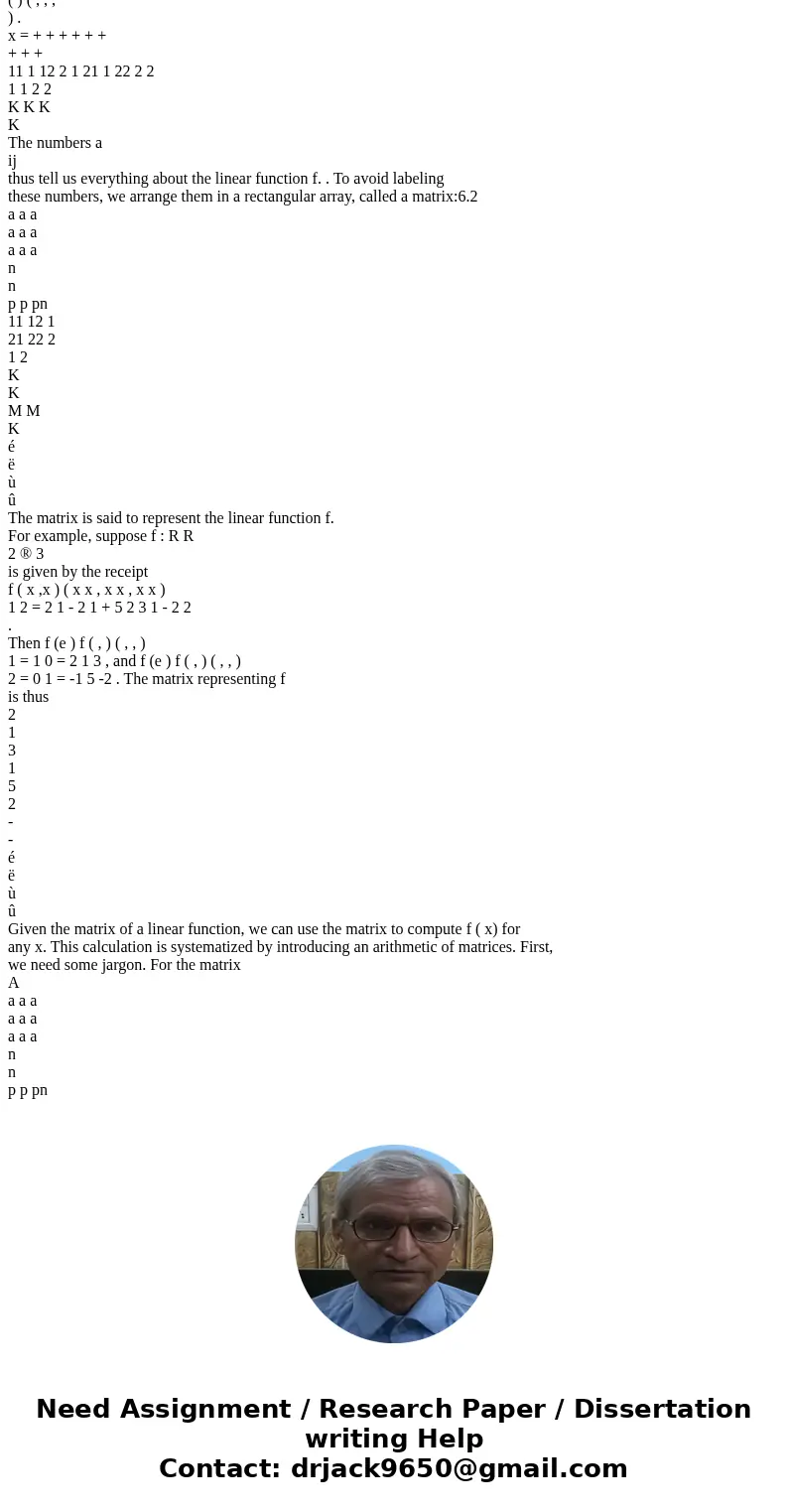Define T Prightarrow p by Tpx pxxpx Consider the linear fun
Solution
Ans-
Suppose f : R R
n ® p
be a linear function. Let e e e
1 2
, ,K,
n
be the coordinate
vectors for R
n
. For any x R
n
Î , we have x = x e + x e + + x e
1 1 2 2 K n n
. Thus
f f x x x x f x f x f
n n n n
( x) = ( e + e + + e ) = (e ) + (e )+ + (e )
1 1 2 2 K 1 1 2 2 K .
Meditate on this; it says that a linear function is entirely determined by its values
f f f
n
(e ) , (e ) , , (e )
1 2 K . Specifically, suppose
f a a a
f a a a
f a a a
p
p
n n n pn
( ) ( , , , ) ,
( ) ( , , , ) ,
( ) ( , , , ) .
e
e
e
1 11 21 1
2 12 22 2
1 2
=
=
=
K
K
M
K
Then
f a x a x a x a x a x a x
a x a x a x
n n n n
p p pn n
( ) ( , , ,
) .
x = + + + + + +
+ + +
11 1 12 2 1 21 1 22 2 2
1 1 2 2
K K K
K
The numbers a
ij
thus tell us everything about the linear function f. . To avoid labeling
these numbers, we arrange them in a rectangular array, called a matrix:6.2
a a a
a a a
a a a
n
n
p p pn
11 12 1
21 22 2
1 2
K
K
M M
K
é
ë
ù
û
The matrix is said to represent the linear function f.
For example, suppose f : R R
2 ® 3
is given by the receipt
f ( x ,x ) ( x x , x x , x x )
1 2 = 2 1 - 2 1 + 5 2 3 1 - 2 2
.
Then f (e ) f ( , ) ( , , )
1 = 1 0 = 2 1 3 , and f (e ) f ( , ) ( , , )
2 = 0 1 = -1 5 -2 . The matrix representing f
is thus
2
1
3
1
5
2
-
-
é
ë
ù
û
Given the matrix of a linear function, we can use the matrix to compute f ( x) for
any x. This calculation is systematized by introducing an arithmetic of matrices. First,
we need some jargon. For the matrix
A
a a a
a a a
a a a
n
n
p p pn


 Homework Sourse
Homework Sourse